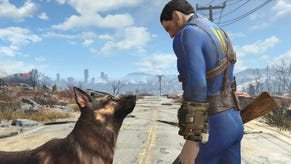Face-Off: Fallout: New Vegas
The epic adventure analysed on PS3, 360 and PC.
In combat scenes, the situation changes somewhat. Both versions drop frames consistently, and the tearing in the 360 game becomes more of an issue. Fallout 3 may well be a graphical adventure game, but in many ways it's an action shooter too and when it comes to it, the game falls short here with sometimes=crippling performance issues. Thankfully, the inclusion of the VATS combat mechanic ensures that this doesn't really affect the quality of the gameplay as much as you would imagine, although VATS itself seems to suffer from some pretty awful input lag, particularly in moving between targets.
While the Xbox 360 version of Fallout: New Vegas can be said to be the smoother-looking, smoother-moving game, other technical deficiencies inherited from Fallout 3 manifest in the sequel, again demonstrating that little if any work has gone into improving the core technology.
In the original Fallout 3 Face-Off we pointed out that while the 360 game had the performance advantage, it was the PS3 game where art assets had more in common with the "master" PC game, and we posted some obvious examples of how the textures and specular effects had been downgraded or omitted entirely on the 360 version (though they were improved a touch in a later patch).
Exactly the same situation can be seen in New Vegas, only it seems to be the case that the downscaled textures are that much more obvious this time around. Every version of the game - including the PC - suffers to some extent from some low-quality artwork, but there's no doubt about it, it's the 360 version that has obviously pared-back visuals compared to both the PS3 and PC games. They're not especially noticeable in the wastelands scenes, but within the towns and inside various buildings they stand out easily. Other differences are apparent - shadow filtering is really poor on PS3, while the specular texture elements on 360 are still noticeably inferior to the PS3 counterparts.
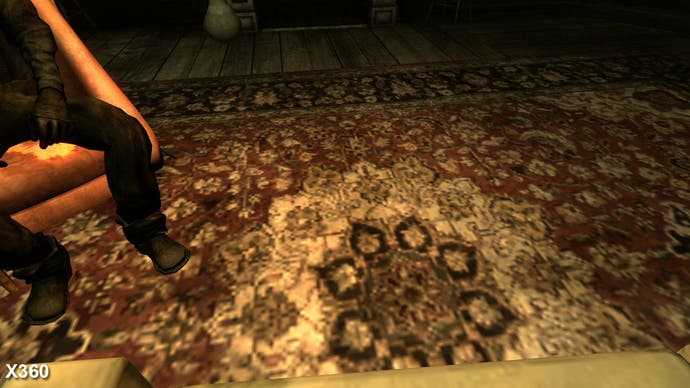
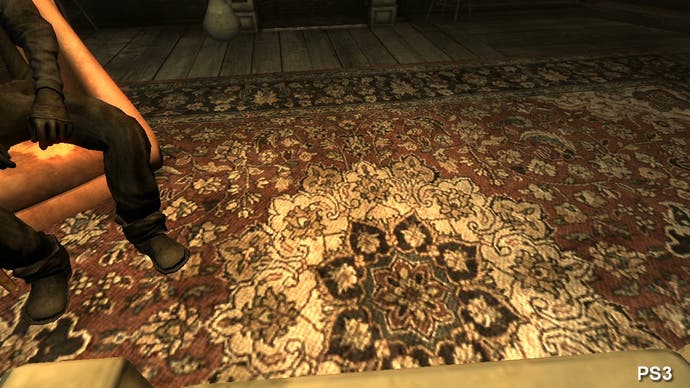
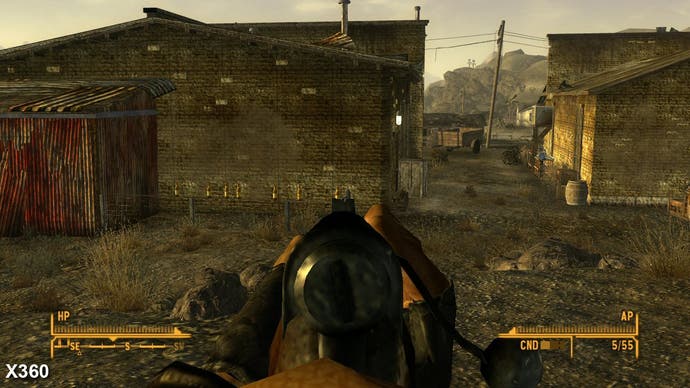
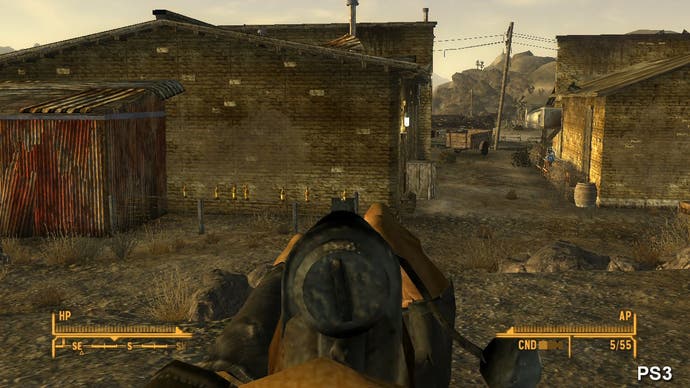
So, what could possibly be the cause of this? On the face of it, the tech side of things presents clear advantages to the 360: the unified 512MB of RAM is more developer-friendly than the two split pools of 256MB in the PS3. It's also the case that the OS footprint on the 360 is still smaller than its PS3 equivalent. The 4x MSAA will have some impact on RAM usage, but surely not enough to see over 30 per cent of the texture data excised from the 360 game?
It's certainly not the case that the DVD format used by the Xbox 360 is the limiting factor. The game occupies 4.8GB when installed to hard drive. The 360's HDD installs are effectively complete DVD dumps, so the stark reality is that Obsidian had a surfeit of space left on the disc to work with if desired. Perhaps to maintain streaming performance, only the fastest areas of the disc were used?
While the 360 version of the game occupies a svelte 4.8GB of drive space, the PS3 version of the game uses over double that, at 9.75GB. There are examples of smarter compression on the 360 version: the developers use XMA audio (effectively interchangeable with the PC WMA codec) while the PS3 version uses the older MP3 standard, but it's interesting to note a mammoth disparity in the size of the audio data. The Sony platform's voice audio is actually bigger than the entirety of the 360 game! By comparing major assets in terms of their file sizes across the three systems, things become clearer.
| Xbox 360 | PlayStation 3 | PC | |
|---|---|---|---|
| Textures | 1.27GB | 1.98GB | 2.0GB |
| Meshes | 692MB | 644MB | 980MB |
| Voices | 1.5GB | 4.9GB | 1.5GB |
| Sound | 361MB | 923MB | 811MB |
| Music | 309MB | 415MB | 522MB |
It looks as though the PS3 version uses the superior Blu-ray storage space to accommodate foreign language versions of all the data, as the PC version has exactly the same amount of voice data as the Xbox 360 title. PC also appears to benefit from significantly higher levels of mesh data - it's just a guess, but there's a reasonable likelihood that this is to accommodate the additional LOD levels that the selectable, superior draw distance gives you.
Interestingly, the 360 mesh data is somewhat higher than the PS3's, but the standout comparison is clearly in the size of the texture data. PS3 and PC are effectively like-for-like, but the Xbox 360 suffers with a massively cut-down 1.27GB up against the nigh-on 2GB size of the PlayStation 3 game. The difference in size between the miscellaneous sound effects is also telling, suggesting that 360 has been cut down from both an audio and video perspective.







